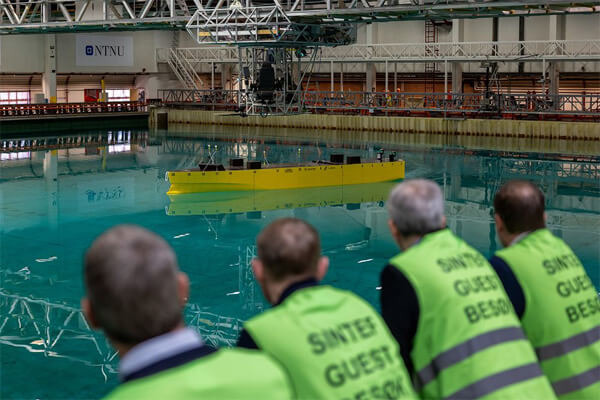Advancing the Sea Zero Project with Innovative Model Testing
Two years after unveiling the Sea Zero project aimed at creating the world’s most energy-efficient cruise ship, Hurtigruten and its partners have further refined the design by conducting a series of model tests. The goal is to create a vessel that can operate along the Norwegian coast without emissions by around 2030.
The latest phase of testing involved extensive digital simulations and physical trials at SINTEF Ocean’s facilities in Trondheim, with contributions from partners such as Vard Design, DNV, Brunvoll, Plug, and Corvus Energy. These tests focused on evaluating various components including large battery packs, retractable sails, air lubrication systems, contra-rotating propellers, and an energy-optimized hull.

Source: Hurtigruten
Gerry Larsson-Fedde, Chief Operating Officer at Hurtigruten, expressed optimism about the project’s progress, stating that the tests have confirmed the feasibility of many of the project’s ambitious goals.
As a result of several months of design work and testing, the ship’s design has been modified: it is now eight meters longer (total length of 143,5 meters/471 feet) and slightly wider, with one less deck to improve stability. Additionally, the design now features two retractable solar sails instead of three.

Source: Hurtigruten
The Sea Zero concept is designed to reduce energy consumption by 40-50 % compared to modern ships, with the solar sails expected to contribute a 10-15 % reduction. This significant decrease in energy use would allow the ship to be equipped with batteries, charged from shore power at strategic ports, enabling emission-free operations under normal weather conditions.
Trond Johnsen, Project Manager for Sea Zero, highlighted that the reduced energy requirement makes it feasible to install a battery system capable of powering the ship between charging ports.
Hurtigruten, already operating a fleet that includes four battery-hybrid ships, continues to focus on sustainable travel and responsible waste management. With the Sea Zero project, the company is working toward launching its first vessel capable of emission-free operation along the Norwegian coast, aligning with Norway’s progressive regulations that require coastal ships and vessels operating in fjords to transition to zero emissions within the coming years.

